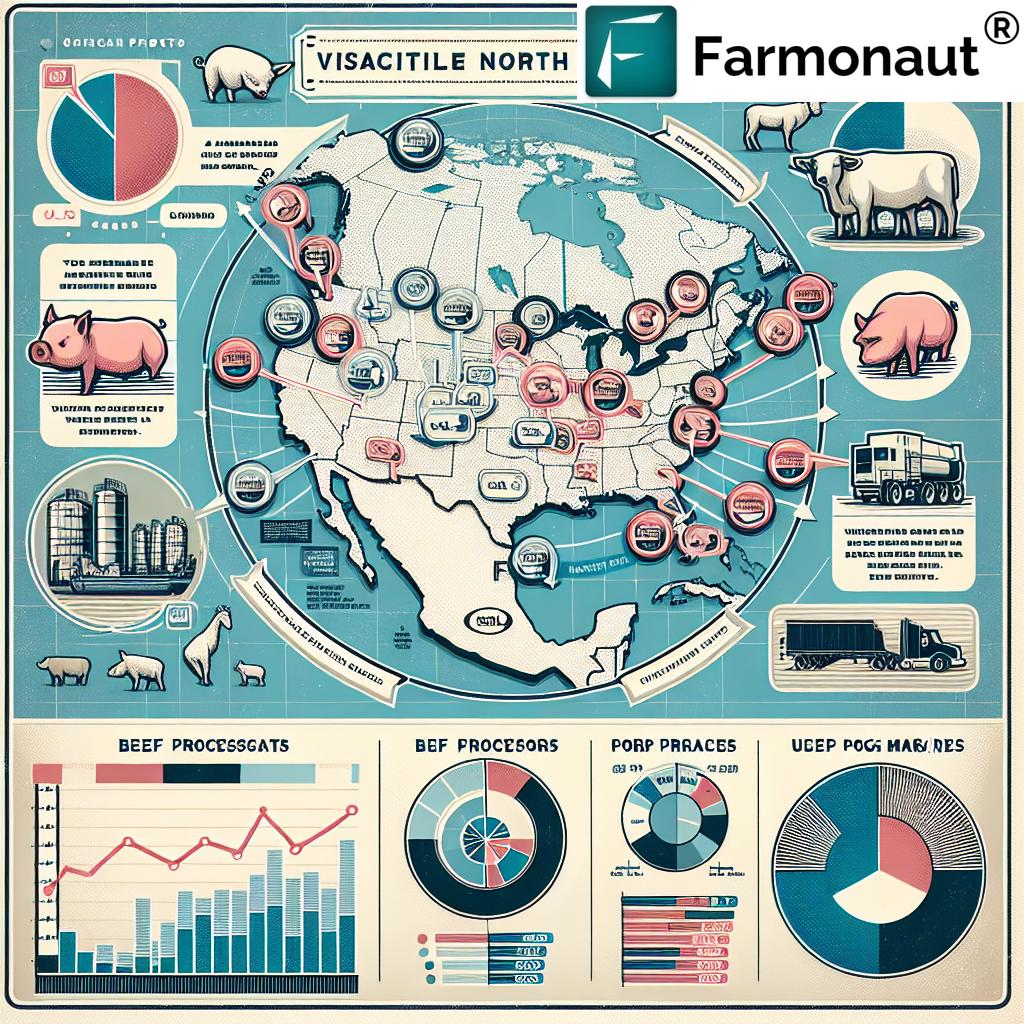Unleashing Volatility: CME Lean Hog Futures Plunge Amid Profit-Taking and Port Lockout Fears
CHICAGO, Nov 4 (Reuters) – The livestock commodity markets experienced significant turbulence as CME lean hog futures took a nosedive on Monday, driven by profit-taking and technical selling. This development has sent ripples through the agricultural futures contracts sphere, highlighting the ongoing livestock market volatility that continues to challenge traders and producers alike.

CME Lean Hog Futures: A Rollercoaster Ride
The CME lean hog futures volatility reached new heights as the December contract slumped by 0.85 cents, closing at 83.225 cents per pound. This decline comes on the heels of last week’s surge to contract highs, which was fueled by robust demand for U.S. pork and tighter-than-anticipated hog supplies.
Matt Wiegand, a commodity broker for risk management firm FuturesOne in Nebraska, succinctly summarized the situation: “Hogs were certainly overbought.” This statement encapsulates the market sentiment that led to the subsequent correction.
Pork Demand Trends and Their Impact on Futures
The pork demand impact on futures has been a key driver of recent market movements. Wholesale cutout values for U.S. pork bellies and hams experienced a slight dip, as reported by the U.S. Department of Agriculture. However, the overall pork carcass cutout remained nearly unchanged, buoyed by an increase in loin values.
- Pork belly prices: Decreased
- Ham prices: Decreased
- Loin values: Increased
- Overall carcass cutout: Stable
These wholesale meat price fluctuations underscore the delicate balance between supply and demand in the pork industry, which directly influences futures trading.
Port of Vancouver Lockout: A New Variable in the Equation
Adding to the market complexity is the looming threat of a Port of Vancouver lockout. The BC Maritime Employers Association announced its intention to lock out workers after a negotiating deadline passed, potentially disrupting exports of meat and other goods.

The Port of Vancouver lockout effects could be far-reaching:
- Disruption of Canadian meat exports
- Potential increase in U.S. pork exports to fill the gap
- Possible redirection of Canadian meat to the U.S. market
The U.S. Meat Export Federation has noted that a prolonged work stoppage at Vancouver could create U.S. pork export opportunities, particularly in the Japanese market for chilled pork. This situation underscores the interconnectedness of global meat markets and the potential for regional disruptions to have wide-ranging impacts.
Cattle Futures: Following the Downward Trend
The volatility wasn’t confined to hog futures, as cattle futures trading also experienced downward pressure. December live cattle futures closed down 0.85 cents at 185.075 cents per pound, continuing a decline that began after reaching a peak last Tuesday—the highest since March.
Similarly, CME November feeder cattle futures ended 0.525 cents lower at 246.350 cents per pound. These cattle futures price trends reflect the broader market sentiment and the ongoing livestock market profit-taking observed across various sectors.
Beef Market Dynamics
While futures markets showed weakness, the cash market for beef displayed some strength:
- Choice boxed beef cutout: Rose $0.57 to $316.91 per hundredweight
- Select boxed beef prices: Jumped $2.13 to $287.16 per cwt
However, these gains in wholesale meat prices didn’t translate to improved margins for processors. Beef processor margins saw a significant squeeze, falling to $1.70 per head of cattle from $8 per head on Friday and a much more robust $58.40 per head just a week ago, according to data from livestock marketing advisory service HedgersEdge.com.
Market Implications and Future Outlook
The current market dynamics present a complex picture for stakeholders across the livestock and meat industry. The interplay between CME lean hog futures volatility, potential disruptions due to the Port of Vancouver lockout, and fluctuating beef processor margins creates a challenging environment for price forecasting and risk management.
For producers and traders involved in agricultural futures contracts, staying informed about these rapidly changing market conditions is crucial. Tools and resources that provide real-time data and analysis can be invaluable in navigating this volatile landscape.
Consider exploring Farmonaut’s suite of agricultural technology solutions:
For developers looking to integrate agricultural data into their applications, Farmonaut offers a robust API:
Farmonaut Satellite & Weather API
Detailed documentation for the API is available here:
For mobile users, Farmonaut’s apps provide on-the-go access to critical agricultural insights:
Conclusion
The recent plunge in CME lean hog futures, coupled with the broader volatility in livestock markets, serves as a stark reminder of the dynamic nature of agricultural commodities. As global trade tensions, supply chain disruptions, and shifting demand patterns continue to influence market movements, industry participants must remain vigilant and adaptable.
The potential for a Port of Vancouver lockout adds another layer of uncertainty, particularly for U.S. pork exports and North American meat trade flows. This situation could create both challenges and opportunities for producers and exporters in the coming weeks.
As the market navigates these turbulent waters, the importance of timely information, sophisticated analysis, and robust risk management strategies cannot be overstated. Stakeholders across the livestock and meat industry will need to closely monitor these developments and adjust their strategies accordingly to thrive in this volatile environment.
This article is based on reporting by Tom Polansek, with editing by Mohammed Safi Shamsi. Market data and insights are subject to change, and readers are encouraged to consult the latest reports and expert analysis for the most up-to-date information.


